
views
- Your car’s tires may be damaged or out of alignment if your car pulls in a certain direction while coasting in neutral.
- You likely have a suspension problem if your car turns sharply while braking, and a brake problem if there’s also a burning smell and/or grinding noise.
- If your car pulls one way and then another, you’re experiencing “memory steering,” which means your steering mechanism is broken.
Uneven Tire Pressure

If your car pulls right while coasting, your tires may be unevenly inflated. When one tire’s pressure is low, your car can sometimes pull to the side of the underinflated tire. Luckily, there’s an easy fix. Check your tire pressure to ensure that’s the problem, then fill the tires to their recommended pressure (located on the inside of the driver’s door). Automotive expert Ed Beery explains how to fill your tires: "Remove the valve [stem] cover and keep it in your hand to avoid losing it...Add air until the desired pressure is reached. The recommended tire pressure is printed on the side of the tire. Replace the valve [stem] cover to a snug fit."
Misaligned Wheels
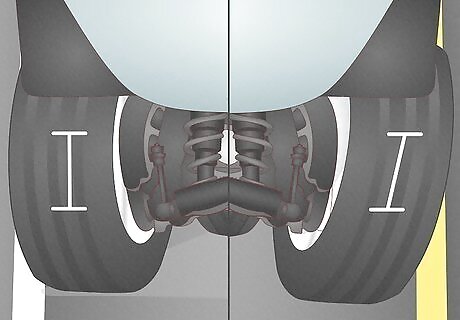
Your car may pull one way after a bad wheel alignment or hitting a curb. When your car’s wheels are properly aligned they sit at a very specific angle on the road. If you hit a curb too hard or get a bad tire job at a shop, your tires can come out of alignment and cause the car to pull. To check if your tires are misaligned, put the car in neutral and let it coast. If it pulls, you may need to realign your tires. This isn't a job for a novice, so take your car to a shop. Mechanics can quickly realign your wheels for somewhere between $100 and $311.
Defective Tires
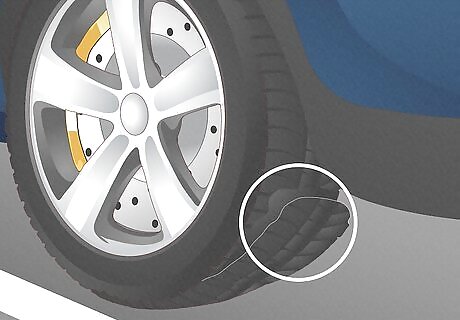
If you just got new tires and your car is pulling, they could be defective. If the belts under the treads of your tires are misaligned it can cause the rubber on one side of the tire to harden and pull your car to the left or right. Replace your faulty tires under warranty.
Mismatched Tires
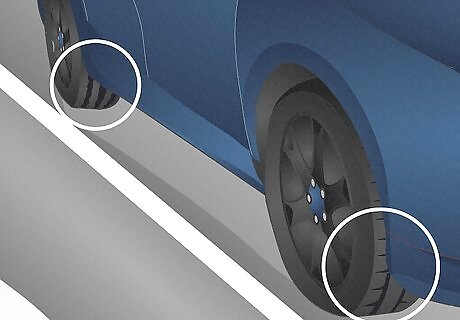
If one tire is different from the others, it can pull your car to one side. Different brands and models have different treads, so if you have an oddball tire, switch it out to match the other wheels. This can also happen if one of your tires is especially old and worn, even if they’re all the same type. Prevent this issue by replacing all your tires at once. To change your tire, set up a jack, remove the wheel’s cover, and loosen (but don’t remove) the lug nuts with a tire iron. Lift your car on the jack and fully remove the nuts, then switch out the tires. Start tightening the lug nuts at the bottom of the tire, then tighten the rest in a star pattern.
Tire Treads Separating
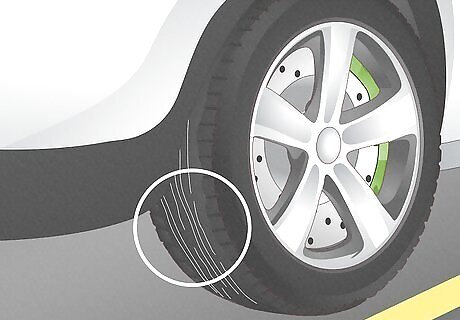
When tires get old or damaged, their treads can detach and pull the car. Some tires have steel belts that rest directly under the treads. When the treads become unstuck from the belt, the tire is destroyed and needs to be replaced. The unevenness of the broken tire can cause your car to pull to one side or another. If you have separated treads, your car may wobble and make thumping sounds when you drive. You may also see bubbles in the tire, or “mole holes”—fingernail-sized holes in the sidewall of the tire. Tread separation isn’t always preventable, but you can lower your risk by keeping your tires properly inflated, driving safely (not hitting curbs and potholes), and not overloading your vehicle.
Road Camber

If your car only pulls sometimes, it may just be the angle of the road. To keep water from pooling in the center of the street, roads are slightly higher in the middle than they are at the sides. The slope of the road, or camber, can cause your car to drift away from the center. If your car only pulls to the side on certain roads, there’s a good chance you’re just being affected by the camber of the road.
Brake Problems
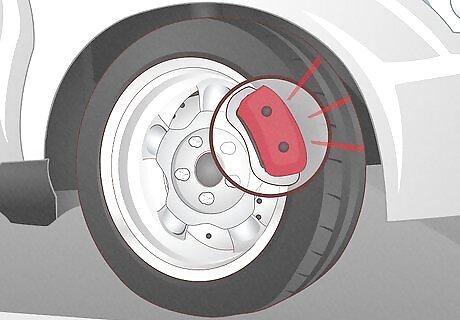
If your car pulls when you brake, the issue may be your braking system. According to automotive specialist Ed Beery, a vehicle pulling to one side consistently "may be caused by a caliper not releasing, a pad binding, or an issue with an emergency brake not releasing." The most common problems are with calipers and braking hydraulics. Calipers are the mechanisms in your wheel that press the brake pads against the tire. If the caliper is having trouble releasing, that means the brake on a certain tire is continuing to be engaged. This doesn’t just pull your car to one side—it wears out your brake pads unevenly, which also causes a pull while braking. Replacing a caliper is tricky—it’s easy to damage parts of your braking system and wheel if you’re not careful—so consider getting an experienced mechanic to replace it for you. Having a single caliper replaced usually costs between $250 and $600. The brakes on a car are operated through pressurized hydraulic tubes, so if those tubes are collapsed or broken, the brakes can’t function properly. If there is uneven pressure applied between the brakes it can cause one side to react more slowly than the other and pull the car. There are many parts of the hydraulic system that could fail and cause this problem. To find out exactly what’s wrong, bring your car to a mechanic. Expect to pay between $150 and $300 on the low end (like for a brake line repair) and up to $600 on the higher end (for a master cylinder repair).
Suspension Problems
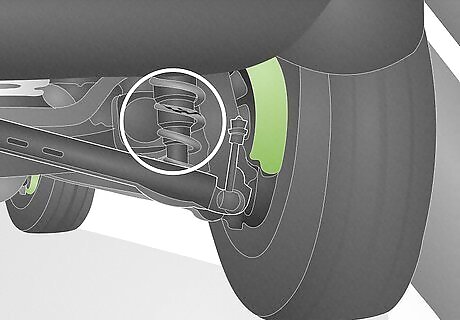
If your car pulls sharply while braking, it may be due to your suspension. According to automotive expert Ed Beery, pulling to one side, leaning out while turning, and hard or loose steering are “signs of a bad suspension.” Your suspension is a large system, so consider getting it checked by a mechanic. Some common problems are weak shocks and loose lower control arms. The lower control arm is what connects the suspension to the frame of the car, and is what gives way when the car bounces on the road. If your control arm is broken, your car will pull sharply while braking. Faulty control arms have to be replaced, which costs anywhere from $220 to $550. Your shocks are what cushion you from the jumps and bumps in the road, so if they’re the problem you’re likely riding rough already. If your shocks are bad, your car also may lurch forward when you brake and feel like it’s swaying when you make turns. To replace your shocks, take off the tire and find the shock—it’s a thin cylinder attached to the axle near the wheel and the frame of the car. Use a breaker bar to loosen the nuts on the shock, then use a socket wrench to remove the old shock. Swap in the new shock and put in the bolts, then put an automotive thread locker on to the ends of the bolts. Tighten the nuts onto the bolts with a socket wrench, then finish up with a torque wrench until you can’t turn it any further. Shocks should always be replaced in pairs (both front or back).
Torque Steering

“Torque steering” causes your car to pull during acceleration. Vehicles with front-wheel drive have two different-length drive shafts. So, when you accelerate very quickly, one side receives a lot more torque than the other and causes the car to pull to one side. Luckily, the fix is to just accelerate more gradually. Torque steering settles itself out once the car is up to speed and both wheels are receiving the same amount of torque.
Memory steering
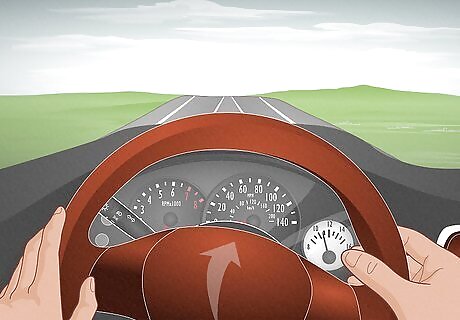
When your car pulls one way and then another, it’s called “memory steering.” Memory steering is caused by binding somewhere in your steering mechanism—something that is supposed to move no longer can. If you take an especially hard turn and then your car starts pulling in that direction, that’s memory steering. Memory steering can be caused by binding in the ball joints of the control arms, worn or bound strut bearings and joints, and binding in the front-end linkage of the car. Binding happens when moving parts get locked up by dirt, damage, and general age. Unless you have extensive automotive experience, consider taking your car into the shop if you’re experiencing memory steering problems. There’s a good chance the issue lies in the strut bearing, which costs between $256 and $309.











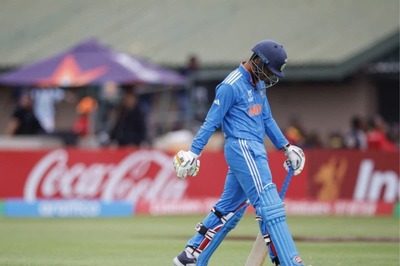






Comments
0 comment